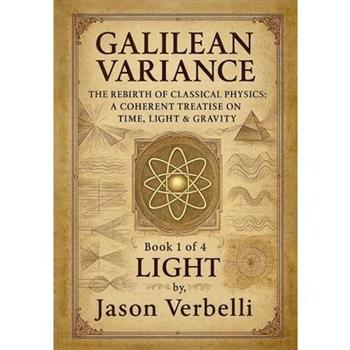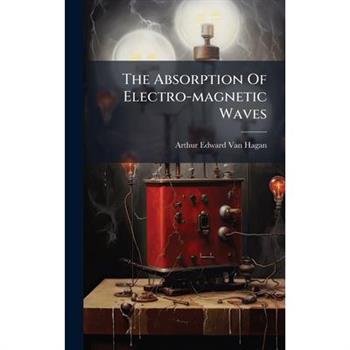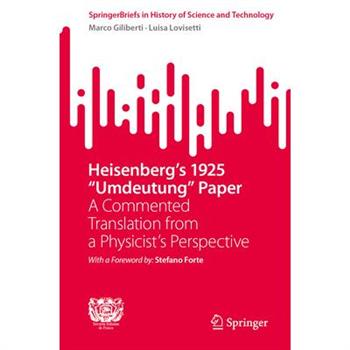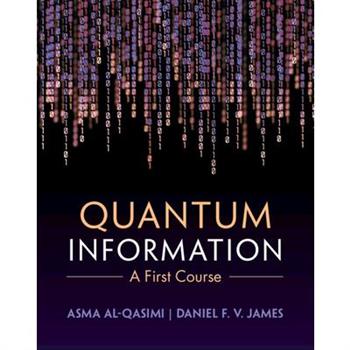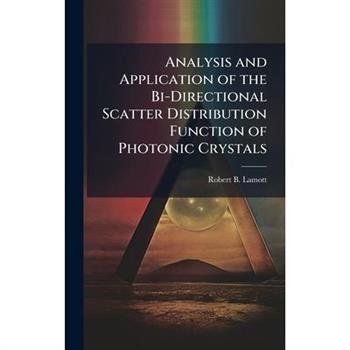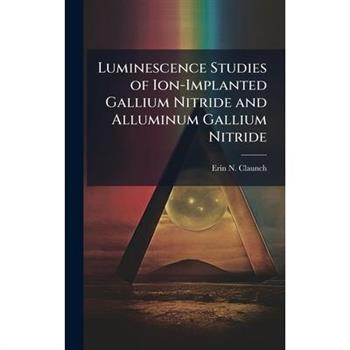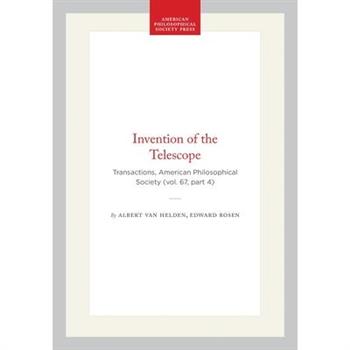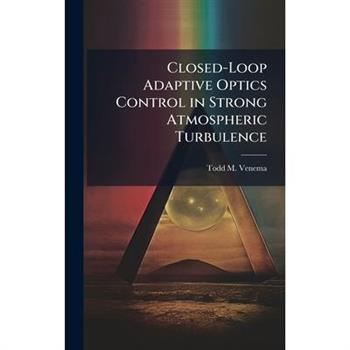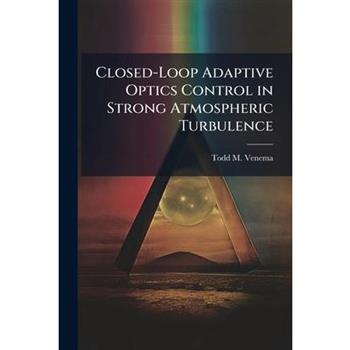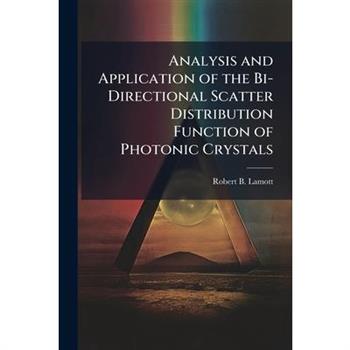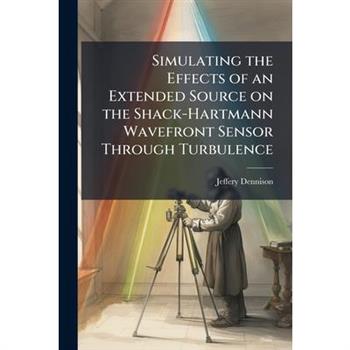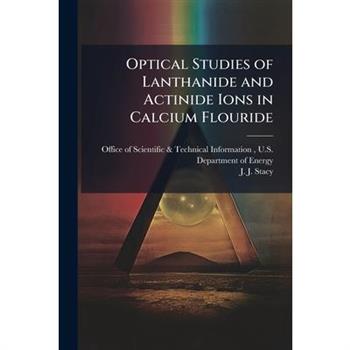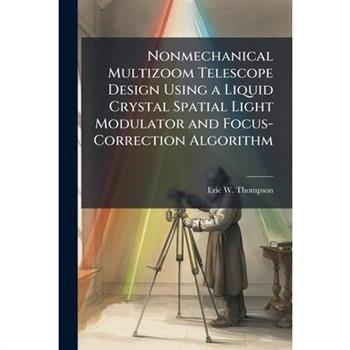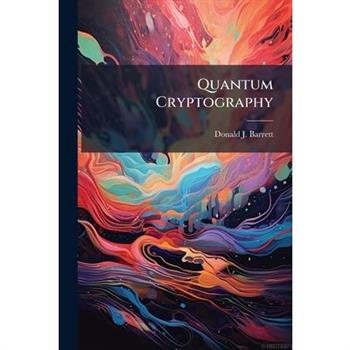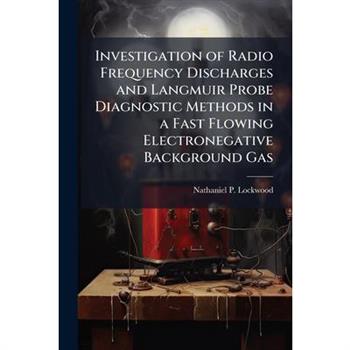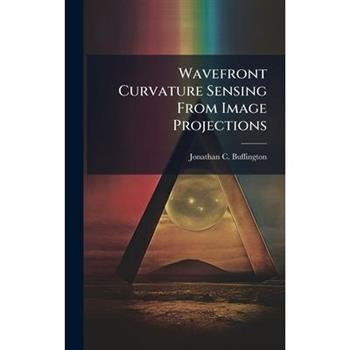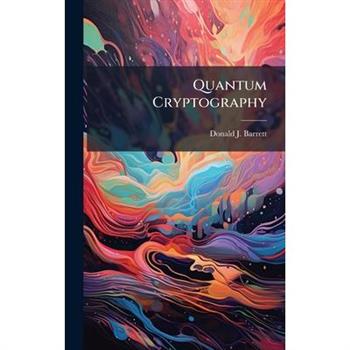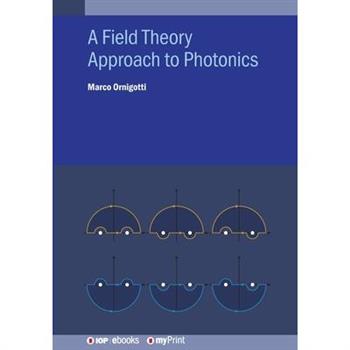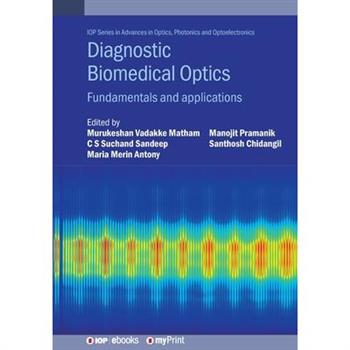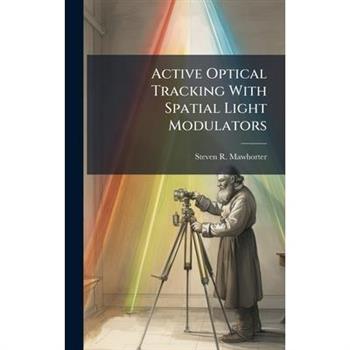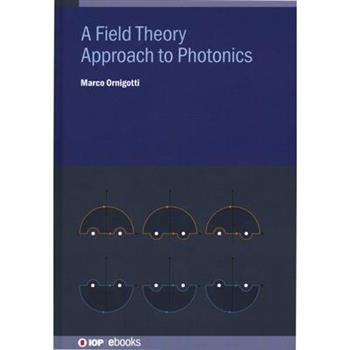Introduction to Quantum Information Processing
This book introduces quantum computing and quantum communications at the undergraduate level for students in the physical sciences, engineering, and mathematics, assuming no prior knowledge of quantum mechanics.
Introduction to Quantum Information Processing
This book introduces quantum computing and quantum communications at the undergraduate level for students in the physical sciences, engineering, and mathematics, assuming no prior knowledge of quantum mechanics. It is a self-contained guide assuming only that the reader is familiar with physics at the college level, calculus (up to and including ordinary differential equations), and some matrix algebra and complex numbers. The book brings the reader up to speed with fundamental concepts in quantum information processing and builds a working knowledge of basic quantum algorithms, quantum error correction, and quantum communication protocols. It covers various models of quantum computation and some of the most common physical realizations of qubits. There is a good number of practice problems and exercises that rely on computer programming with the Qiskit language. The book can be used to prepare students of physics, mathematics, electrical and computer engineering, computer science, optics and photonics, and mathematics for internships and research experiences in quantum information processing, both during and after their undergraduate studies. It also helps those who plan to apply to graduate school and do research in this area. Key Features: Self-contained coverage of quantum computing and quantum communications, from the motivations to the fundamentals and applications, including key concepts and contemporary topics. Contains practice problems and exercises, including some that require programming in Qiskit (the python-based, high-level language for programming quantum computers, adopted by nearly all quantum hardware providers and completely open source). Very light background knowledge assumed, making this book accessible to a variety of majors in the natural sciences, engineering, and mathematics.
Advances in Biophotonics, Nanofabrication, Optical Metrology and Nonlinear and Ultrafast Photonics
This book presents the proceedings of the Biennial Photonics Conference (Photonics 2023) held at IISc, Bengaluru on 5-8 July 2023. It covers topics across multiple areas of photonics, including established areas like optical communication and networks, quantum optics, ​non-linear and ultrafast photonics​, nanophotonics​, biophotonics and bioimaging, ​​photonic integrated circuits​, fibers and sensors, optical materials and fabrication techniques, optical metrology, and instrumentation, optofluidics, ​laser applications, ​optoelectronics. The book also covers emerging areas in photonics, such as THz photonics, structured Light, 2D materials, optomechanics, topological photonics, and AI/ML in photonics. The book will be useful for researchers and professionals interested in the broad field of photonics.
The Absorption Of Electro-magnetic Waves
Explore the intricate world of electromagnetic wave absorption in this detailed study by Arthur Edward Van Hagan. "The Absorption Of Electro-magnetic Waves" delves into the principles and mechanisms governing how electromagnetic waves interact with various materials. This work provides foundational knowledge for students, researchers, and engineers seeking a deeper understanding of wave behavior and its practical applications. From theoretical underpinnings to experimental observations, this book offers a comprehensive analysis of the factors influencing absorption rates and characteristics. Discover the enduring relevance of this scientific exploration, essential for advancements in fields ranging from telecommunications to material science.This work has been selected by scholars as being culturally important, and is part of the knowledge base of civilization as we know it. This work was reproduced from the original artifact, and remains as true to the original work as possible. Therefore, you will see the original copyright references, library stamps (as most of these works have been housed in our most important libraries around the world), and other notations in the work.This work is in the public domain in the United States of America, and possibly other nations. Within the United States, you may freely copy and distribute this work, as no entity (individual or corporate) has a copyright on the body of the work.As a reproduction of a historical artifact, this work may contain missing or blurred pages, poor pictures, errant marks, etc. Scholars believe, and we concur, that this work is important enough to be preserved, reproduced, and made generally available to the public. We appreciate your support of the preservation process, and thank you for being an important part of keeping this knowledge alive and relevant.
Reading Realms
Enter a realm where time itself bends to the will of light, where the most fundamental processes of matter unfold in mere femtoseconds-a breathtaking landscape explored in "Reading Realms: Ultrafast Molecular Processes Stimulated by Focused Light Pulses." This groundbreaking work invites you to witness the extraordinary interplay between light and molecules, revealing how precise, tailored bursts of energy can sculpt the very fabric of chemical reality.At its core, this illuminating text meticulously uncovers the fundamental principles governing how light influences matter at the quantum level. It begins by delving into Quantum Electrodynamics, laying bare the bedrock theories that define absorption and emission. Readers will grasp the potent concepts of coherent control, understanding how the manipulation of light pulses can orchestrate quantum systems with unprecedented fidelity, steering their evolution along desired pathways.The journey continues into the technological marvels that empower this scientific frontier. Explore the sophisticated world of ultrafast laser pulses, the indispensable tools that render such fleeting moments visible. Discover advanced pulse shaping techniques that allow for exquisite temporal tailoring of light, offering unprecedented command over its interaction with molecular systems. Unravel the ingenious mechanism of Chirped Pulse Amplification, a revolutionary innovation that surmounts historical limitations in laser power, enabling the generation of pulses intense enough to provoke dramatic molecular transformations. Furthermore, this section rigorously examines the fundamental constraints that define temporal resolution limits, dictating the incredibly short timescales accessible for study.Moving from the experimental to the theoretical, the book then navigates the complex landscape of molecular dynamics. It introduces the Born-Oppenheimer approximation, a cornerstone concept that simplifies the intricate interplay between electronic and nuclear motions, making quantum chemical calculations tractable. the dynamic evolution of molecules across complex Potential Energy Surfaces, conceptual landscapes that map out the energy of a system as a function of its geometry. Crucially, the text provides profound insights into Non-Adiabatic.Transitions, those pivotal moments where the Born-Oppenheimer approximation falters, revealing critical pathways for molecular transformation. Explore diverse methodologies for modeling molecular motion, from pragmatic Trajectory Simulations that offer classical perspectives to rigorous Quantum Dynamics, which capture the full wave-like behavior of atoms.Contemplate the electrifying prospects of quantum control in the nascent field of Quantum Computing, where the manipulation of molecular states at unprecedented speeds could unlock computational powers beyond imagination. Explore the exciting potential for New Materials Development, enabled by the ability to precisely manipulate molecular structure and dynamics with light. Discover the latest advancements in Advanced Imaging Methods that offer real-time visualization of molecular events. Conclude with a visionary outlook on the burgeoning frontier of Attosecond Science, a field poised to uncover even faster, electron-driven molecular processes, promising to rewrite our understanding of chemical reactions at their very genesis.Elevate your understanding and command the future of molecular science-secure your voyage into these Reading Realms today!
Optical Trapping and Manipulation of New Materials
This book intends to describe and review the extension of optical trapping and manipulation approaches to new materials beyond the classical dielectric beads.
Optical Trapping and Manipulation of New Materials
This book intends to describe and review the extension of optical trapping and manipulation approaches to new materials beyond the classical dielectric beads.
Advanced Topics in Physics for Undergraduates
Advanced Topics in Physics for Undergraduates explores classical mechanics, electrodynamics, and quantum mechanics beyond the standard introductory courses. Designed to support departments with limited resources, this book integrates these advanced topics into a single, cohesive volume, offering students a unified perspective on fundamental physical principles. By presenting these interconnected subjects in one voice, it provides a compact yet comprehensive resource that enhances understanding and bridges the gaps between core physics disciplines.Features: A structured three-part approach covering classical mechanics, electrodynamics, and quantum mechanics In-depth exploration of Lagrange and Hamilton formalisms, small oscillations, conservation principles, scalar and vector potentials, radiation, and special relativity Advanced quantum mechanics topics such as perturbation theory, scattering, quantum information, and quantum computing This book serves as an invaluable guide for undergraduate students seeking to deepen their knowledge of physics, preparing them for further academic study or careers in physics and related fields. Its clear explanations and structured approach make it accessible to learners looking to advance their understanding beyond traditional coursework.
Heisenberg's 1925 Umdeutung Paper
This book presents a meticulously crafted new translation of Werner Heisenberg's ground-breaking 1925 paper, widely regarded as the birth "certificate" of quantum mechanics. The translation remains faithful to the original terminology and is accompanied by a particularly detailed, step-by-step commentary. These annotations are designed not only to clarify the meaning of this complex work for the modern reader but also to illuminate the reasoning behind Heisenberg's choices, offering deep insight into the physical, conceptual, and mathematical foundations of the theory. Great care has been taken to make the calculations as explicit as possible while keeping them concise, ensuring that every essential step is clear without unnecessary complexity. This approach allows readers to grasp the logical flow of Heisenberg's argument while appreciating the elegance of his formulation. Beyond the paper itself, the book situates Heisenberg's work within the broader intellectual landscape of the time, tracing the intense discussions and challenges in physics that led to the birth of quantum mechanics. It also provides insight into the subsequent contributions of Born, Jordan, and Heisenberg himself that culminated in the formulation of matrix mechanics. Aimed at readers with a university-level background in quantum mechanics, this book is an invaluable resource for those who wish to delve into the motivations, conceptual developments, and intricate reasoning that led Heisenberg to construct the new quantum theory in such a unique and revolutionary way.
Quantum Information
Important concepts from the diverse fields of physics, mathematics, engineering and computer science coalesce in this foundational text on the cutting-edge field of quantum information. Designed for undergraduate and graduate students with any STEM background, and written by a highly experienced author team, this textbook draws on quantum mechanics, number theory, computer science technologies, and more, to delve deeply into learning about qubits, the building blocks of quantum information, and how they are used in quantum computing and quantum algorithms. The pedagogical structure of the chapters features exercises after each section as well as focus boxes, giving students the benefit of additional background and applications without losing sight of the big picture. Recommended further reading and answers to select exercises further support learning. Written in approachable and conversational prose, this text offers a comprehensive treatment of the exciting field of quantum information while remaining accessible to students and researchers within all STEM disciplines.
Advances in Atomic, Molecular, and Optical Physics
Advances in Atomic, Molecular, and Optical Physics, Volume 74 gives an overview on the latest evolutions in atomic, molecular, and optical physics, specifically promoting two important aspects of the field of ultrafast optics and strong fields. In particular, the book consists of a review over high harmonic generation (HHG) from thin-film samples, featuring experimental and theoretical studies of HHG from thin films in comparison to bulk crystals of the same materials and the specific interest in HHG from van der Waals materials and HHG studies at the 2D limit. The second review concerns quantum computing technologies enabled studies of molecular processes using present-day devices, with applications in vibrational spectroscopy, electronic structure calculations, population transfer processes induced by a laser field, and interacting spin systems.
Undersea Fiber Communication Systems
Undersea Fiber Communication Systems, Third edition is an authoritative guide exploring the comprehensive aspects of optical communication systems over submarine cables. Covering topics such as design, technology, installation, and maintenance, it serves as an essential resource for students, experts, operators, and investors alike. This updated edition reflects the significant advancements made in the field over the past decade, ensuring it remains indispensable in the rapidly evolving domain of submarine optical communications. The third edition addresses key developments including the transverse role of open cables, the evolution of coherent transponders, and the impacts of space division multiplexing (SDM). The book also explores advancements in wet plant equipment, environmental impacts of marine operations, contract management, and the progression of unrepeated systems to match repeated systems at network levels. This comprehensive update ensures the book's relevance and utility in a field marked by continuous innovation.
Alhacen on Refraction
Alhacen's treatment of light and sight in the "De aspectibus" culminates with the analysis of refraction in book 7. Far briefer than his account of reflection, which occupies three books, Alhacen's study of refraction follows essentially the same pattern of analysis, starting with various experiments designed to establish or confirm the governing principles of refraction empirically and proceeding to the application of those principles to specific cases according to the shape of the refracting surface. In many respects, in fact, reflection and refraction are side of the same coin according to Alhacen. Contents of this two-volume set: (1) Intro.: Alhacen's Analysis of Refraction: An Overview; The Prolemaic Underpinnings of Alhacen's Refraction Analysis; The Fate of Alhacen's Refraction Analysis in the Latin West; Putting Alhacen in His Proper Place; (2) Manuscripts and Editing; (3) Latin Text; (4) English Translation. Glossary and Biblio. Illus.
Alhacen on Refraction
Alhacen's treatment of light and sight in the "De aspectibus" culminates with the analysis of refraction in book 7. Far briefer than his account of reflection, which occupies three books, Alhacen's study of refraction follows essentially the same pattern of analysis, starting with various experiments designed to establish or confirm the governing principles of refraction empirically and proceeding to the application of those principles to specific cases according to the shape of the refracting surface. In many respects, in fact, reflection and refraction are side of the same coin according to Alhacen. Contents of this two-volume set: (1) Intro.: Alhacen's Analysis of Refraction: An Overview; The Prolemaic Underpinnings of Alhacen's Refraction Analysis; The Fate of Alhacen's Refraction Analysis in the Latin West; Putting Alhacen in His Proper Place; (2) Manuscripts and Editing; (3) Latin Text; (4) English Translation. Glossary and Biblio. Illus.
Optical Magic in the Late Renaissance
Begins with a brief account of Giambattista Della Porta's life, a review of the genesis of De Refractione, and an examination of the textual sources on which Della Porta drew in composing the book and its analytic narrative. Explains the why and how of this edition and translation of the original Latin text. Examines Della Porta's physical account of refraction, his overall account of vision, his account of visual illusions and their environmental or pathological causes, and his analysis of the rainbow and some other meteorological phenomena. Addresses the historical significance of Della Porta's account of light and sight. The facing Latin-English edition that follows contains biographical sketches of authors cited by Della Porta. Illus.
Analysis and Application of the Bi-Directional Scatter Distribution Function of Photonic Crystals
Photonic crystals (PCs) are periodic structures built from materials with different refractive indices repeated at sub-wavelength intervals, which results in unusual optical characteristics, including narrow band laser protection, and zero reflectance and high absorption anomalies. Most of the research into the optical properties of PCs has concentrated only on the small range of wavelengths and angles where these effects occur. To better understand where all light leaving a PC is scattered, a Complete Angle Scatter Instrument was used to analyze the scatter from three Guided Mode Resonance Filters designed for laser protection. In the plane of incidence, measurements of the scatter strength were made for nearly all incident and scattered angles. Reflectance data was also taken out of the plane of incidence for selected incidence angles, showing the directional reflectance over the entire hemisphere. This data was used to modify existing empirically based Bi-directional Scatter Distribution Functions (BSDFs), with the goal of producing a model suitable for scene generation of complex objects coated with a GMRF surface.This work has been selected by scholars as being culturally important, and is part of the knowledge base of civilization as we know it. This work was reproduced from the original artifact, and remains as true to the original work as possible. Therefore, you will see the original copyright references, library stamps (as most of these works have been housed in our most important libraries around the world), and other notations in the work.This work is in the public domain in the United States of America, and possibly other nations. Within the United States, you may freely copy and distribute this work, as no entity (individual or corporate) has a copyright on the body of the work.As a reproduction of a historical artifact, this work may contain missing or blurred pages, poor pictures, errant marks, etc. Scholars believe, and we concur, that this work is important enough to be preserved, reproduced, and made generally available to the public. We appreciate your support of the preservation process, and thank you for being an important part of keeping this knowledge alive and relevant.
Stimulated Brillouin and Backward Raman Light Scattering
The Office of Scientific & Technical Information (OSTI), is a part of the U.S. Department of Energy (DOE) that houses research and development results from projects funded by the DOE. The information is generally an article, technical document, conference paper or dissertation. This is one of those publications.This work has been selected by scholars as being culturally important, and is part of the knowledge base of civilization as we know it. This work was reproduced from the original artifact, and remains as true to the original work as possible. Therefore, you will see the original copyright references, library stamps (as most of these works have been housed in our most important libraries around the world), and other notations in the work.This work is in the public domain in the United States of America, and possibly other nations. Within the United States, you may freely copy and distribute this work, as no entity (individual or corporate) has a copyright on the body of the work.As a reproduction of a historical artifact, this work may contain missing or blurred pages, poor pictures, errant marks, etc. Scholars believe, and we concur, that this work is important enough to be preserved, reproduced, and made generally available to the public. We appreciate your support of the preservation process, and thank you for being an important part of keeping this knowledge alive and relevant.
Luminescence Studies of Ion-Implanted Gallium Nitride and Alluminum Gallium Nitride
Recently, research on the wide bandgap semiconductors such as GaN and AlxGa1-xN became very popular for their applications on various devices. Therefore comprehensive and systematic luminescence studies of Si implanted AlxGa1-xN, Mg doped GaN, and Si+N implanted GaN grown on sapphire substrates by molecular beam epitaxial method have been made as a function of ion dose and anneal temperature. The ions were implanted at 200 keV with doses ranging from 1x10 13 to 1x10 15 cm -2 at room temperature. The samples were proximity cap annealed from 1200 to 1350 [degrees] C with a 500 ?... thick AlN cap in a nitrogen environment. It has been found that the optical activation and implantation damage recovery are highly dependent upon ion dose and anneal temperature. The results of luminescence measurements on AlxGa1-xN made at 5 K by both photoluminescence and cathodoluminescence show that nearly complete implantation damage recovery can only be obtained after annealing at 1350 [degrees] C. The Si+N implanted GaN showed only a small amount of optical activation in the cathodoluminescence measurements at 1250 to 1350 [degrees] C. Mg doped GaN results indicated that optical activation of the Mg ions was not prevalent, and ion implantation damage might not have been removed completely at 1350 [degrees] C. The results also indicate that current AlN cap protected the implanted AlxGa1-xN layer very well during high temperature annealing without creating any significant annealing damage. These luminescence observations are consistent with the results of electrical activation studies made on these samples.This work has been selected by scholars as being culturally important, and is part of the knowledge base of civilization as we know it. This work was reproduced from the original artifact, and remains as true to the original work as possible. Therefore, you will see the original copyright references, library stamps (as most of these works have been housed in our most important libraries around the world), and other notations in the work.This work is in the public domain in the United States of America, and possibly other nations. Within the United States, you may freely copy and distribute this work, as no entity (individual or corporate) has a copyright on the body of the work.As a reproduction of a historical artifact, this work may contain missing or blurred pages, poor pictures, errant marks, etc. Scholars believe, and we concur, that this work is important enough to be preserved, reproduced, and made generally available to the public. We appreciate your support of the preservation process, and thank you for being an important part of keeping this knowledge alive and relevant.
Invention of the Telescope
Ours is an age of science and technology, based on precision instruments. The first such device to strengthen our feeble human senses in our striving to comprehend the strange and elusive universe around us was the telescope. Cornelis de Waard, in his "De uitvinding der verrekijkers" (The Hague, 1906), had uncovered many new documents bearing on the genesis of the telescope. Van Helden began this project as a translation of de Waard's study. However, Van Helden decided that the profession and de Waard's memory would be better served by a collection and translation of all the relevant primary sources named in his study. Contents of this volume: Intro.; The Background; Between Porta and Lipperhey, 1589-1608; and Documents. Illus. Reprint.
Characterizing Effects and Benefits of Beam Defocus on High Energy Laser Performance Under Thermal Blooming and Turbulence Conditions for Air-to-Ground Engagements
This dissertation makes contributions towards knowledge of optimizing of laser weapon performance when operating in the air-to-ground (ATG) regime in thermal blooming conditions. Wave optics modeling techniques were used to represent laser weapon performance in a high fidelity sense to allow progress to be made toward improving lower-fidelity scaling laws that can be used in systems level analysis which has need for better representations of thermal blooming. Chemical-oxygen iodine laser (COIL) based weapon systems that operate near the ground will experience thermal blooming due to atmospheric absorption if output power is sufficiently high. The thermal lens in the ATG case is predominantly in the far-field of the optical system which puts the problem outside the envelope for most classical phase correction techniques. Focusing the laser beyond the target (defocus) in the air-to-ground regime is shown to improve irradiance at the target and can be thought of as reducing the thermal blooming distortion number, ND, rather than phase correction. Improvement is shown in a baseline scenario presented and all variations from it explored herein. The Breaux ND is examined for potential use in a defocus scaling law, and a correction factor due to Smith (1977), developed for a different context, is proposed to address deficiencies. Optimal defocus settings and expected improvement are presented as a function of Breaux ND. Also, the generally negative interaction between turbulence and thermal blooming is investigated and shown to further limit performance potential of ATG laser weapons. This negative interaction can impact the weapon design trade space and operational methods for minimizing the interaction and thermal blooming are explored in a case study.This work has been selected by scholars as being culturally important, and is part of the knowledge base of civilization as we know it. This work was reproduced from the original artifact, and remains as true to the original work as possible. Therefore, you will see the original copyright references, library stamps (as most of these works have been housed in our most important libraries around the world), and other notations in the work.This work is in the public domain in the United States of America, and possibly other nations. Within the United States, you may freely copy and distribute this work, as no entity (individual or corporate) has a copyright on the body of the work.As a reproduction of a historical artifact, this work may contain missing or blurred pages, poor pictures, errant marks, etc. Scholars believe, and we concur, that this work is important enough to be preserved, reproduced, and made generally available to the public. We appreciate your support of the preservation process, and thank you for being an important part of keeping this knowledge alive and relevant.
Closed-Loop Adaptive Optics Control in Strong Atmospheric Turbulence
A self-referencing interferometer based closed-loop adaptive optics controller is developed which is designed to operate effectively under strong turbulence conditions. The aberrated optical field is modeled stochastically and then estimates of the state of the system are developed using a steady-state, fixed-gain Kalmanfilter. The phase of the optical field is considered the state of the system which is wrapped in a limited range of (-; ]. This phase is unwrapped through the use of a least-squares reconstructor which has been modified to work effectively in the presence of branch points associated with strong turbulence. The conjugate of the optical phase is then applied to the system's deformable mirror in order to correct for the e ects of atmospheric turbulence on the optical field. The advances developed in this research are in the application of a steady-state, fixed-gain Kalmanfilter to the input of an adaptive optic system, unwrapping the optical phases after the field estimation, and improving the phase unwrapping by varying the domain of the rotational phase component present in strong turbulence. The system developed in this research is shown in computer simulation to be improved over current designs by comparing performance plotsof system Strehl ratios for systems utilizing the different designs.This work has been selected by scholars as being culturally important, and is part of the knowledge base of civilization as we know it. This work was reproduced from the original artifact, and remains as true to the original work as possible. Therefore, you will see the original copyright references, library stamps (as most of these works have been housed in our most important libraries around the world), and other notations in the work.This work is in the public domain in the United States of America, and possibly other nations. Within the United States, you may freely copy and distribute this work, as no entity (individual or corporate) has a copyright on the body of the work.As a reproduction of a historical artifact, this work may contain missing or blurred pages, poor pictures, errant marks, etc. Scholars believe, and we concur, that this work is important enough to be preserved, reproduced, and made generally available to the public. We appreciate your support of the preservation process, and thank you for being an important part of keeping this knowledge alive and relevant.
Closed-Loop Adaptive Optics Control in Strong Atmospheric Turbulence
A self-referencing interferometer based closed-loop adaptive optics controller is developed which is designed to operate effectively under strong turbulence conditions. The aberrated optical field is modeled stochastically and then estimates of the state of the system are developed using a steady-state, fixed-gain Kalmanfilter. The phase of the optical field is considered the state of the system which is wrapped in a limited range of (-; ]. This phase is unwrapped through the use of a least-squares reconstructor which has been modified to work effectively in the presence of branch points associated with strong turbulence. The conjugate of the optical phase is then applied to the system's deformable mirror in order to correct for the e ects of atmospheric turbulence on the optical field. The advances developed in this research are in the application of a steady-state, fixed-gain Kalmanfilter to the input of an adaptive optic system, unwrapping the optical phases after the field estimation, and improving the phase unwrapping by varying the domain of the rotational phase component present in strong turbulence. The system developed in this research is shown in computer simulation to be improved over current designs by comparing performance plotsof system Strehl ratios for systems utilizing the different designs.This work has been selected by scholars as being culturally important, and is part of the knowledge base of civilization as we know it. This work was reproduced from the original artifact, and remains as true to the original work as possible. Therefore, you will see the original copyright references, library stamps (as most of these works have been housed in our most important libraries around the world), and other notations in the work.This work is in the public domain in the United States of America, and possibly other nations. Within the United States, you may freely copy and distribute this work, as no entity (individual or corporate) has a copyright on the body of the work.As a reproduction of a historical artifact, this work may contain missing or blurred pages, poor pictures, errant marks, etc. Scholars believe, and we concur, that this work is important enough to be preserved, reproduced, and made generally available to the public. We appreciate your support of the preservation process, and thank you for being an important part of keeping this knowledge alive and relevant.
Analysis and Application of the Bi-Directional Scatter Distribution Function of Photonic Crystals
Photonic crystals (PCs) are periodic structures built from materials with different refractive indices repeated at sub-wavelength intervals, which results in unusual optical characteristics, including narrow band laser protection, and zero reflectance and high absorption anomalies. Most of the research into the optical properties of PCs has concentrated only on the small range of wavelengths and angles where these effects occur. To better understand where all light leaving a PC is scattered, a Complete Angle Scatter Instrument was used to analyze the scatter from three Guided Mode Resonance Filters designed for laser protection. In the plane of incidence, measurements of the scatter strength were made for nearly all incident and scattered angles. Reflectance data was also taken out of the plane of incidence for selected incidence angles, showing the directional reflectance over the entire hemisphere. This data was used to modify existing empirically based Bi-directional Scatter Distribution Functions (BSDFs), with the goal of producing a model suitable for scene generation of complex objects coated with a GMRF surface.This work has been selected by scholars as being culturally important, and is part of the knowledge base of civilization as we know it. This work was reproduced from the original artifact, and remains as true to the original work as possible. Therefore, you will see the original copyright references, library stamps (as most of these works have been housed in our most important libraries around the world), and other notations in the work.This work is in the public domain in the United States of America, and possibly other nations. Within the United States, you may freely copy and distribute this work, as no entity (individual or corporate) has a copyright on the body of the work.As a reproduction of a historical artifact, this work may contain missing or blurred pages, poor pictures, errant marks, etc. Scholars believe, and we concur, that this work is important enough to be preserved, reproduced, and made generally available to the public. We appreciate your support of the preservation process, and thank you for being an important part of keeping this knowledge alive and relevant.
An Infrared Camera Simulation for Estimating Spatial Temperature Profiles and Signal-to-Noise Ratios of an Airborne Laser-Illuminated Target
Airborne Laser testing and evaluation can be aided by developing a spectrally-based infrared camera simulation to explore how the target surface's specular and diffuse reflectivities affect the observed signal-to-noise ratio (SNR)and how the target's temperature in the laserspot can estimated. This simulation provides for the observed irradiance, scaled by atmospheric absorption, to consist of the target's self-emission, reflected background emission, and the path emission from the observer to the target. The observed irradiance isscaled and distributed onto a focal plane array by way of a simulated optical system, whose effectsare described by modulation transfer functions. The modeled detector response converts the observed irradiance to a current signal from which detector noise quantities are computed. Analyzing the simulated data shows that the observed SNR is dependent upon the target's reflectivity, and leads to a conclusion that the mid-wave infrared band is best choice for observing the thermal emission. For estimating temperature, a least-squares optimization will not work because of the effects of the point spread function.This work has been selected by scholars as being culturally important, and is part of the knowledge base of civilization as we know it. This work was reproduced from the original artifact, and remains as true to the original work as possible. Therefore, you will see the original copyright references, library stamps (as most of these works have been housed in our most important libraries around the world), and other notations in the work.This work is in the public domain in the United States of America, and possibly other nations. Within the United States, you may freely copy and distribute this work, as no entity (individual or corporate) has a copyright on the body of the work.As a reproduction of a historical artifact, this work may contain missing or blurred pages, poor pictures, errant marks, etc. Scholars believe, and we concur, that this work is important enough to be preserved, reproduced, and made generally available to the public. We appreciate your support of the preservation process, and thank you for being an important part of keeping this knowledge alive and relevant.
On the Electromagnetic Effect of Convection-currents
"On the Electromagnetic Effect of Convection-currents" explores the groundbreaking research of Henry Augustus Rowland and Cary T. Hutchinson into the fundamental principles of electromagnetism. Originally published in 1889, this work delves into the experimental investigations and theoretical underpinnings of convection currents and their electromagnetic effects. This historical document provides valuable insights into the scientific advancements of the late 19th century, showcasing the meticulous methodologies employed by early physicists. Researchers and students of physics, electrical engineering, and the history of science will find this a fascinating and important resource.This work has been selected by scholars as being culturally important, and is part of the knowledge base of civilization as we know it. This work was reproduced from the original artifact, and remains as true to the original work as possible. Therefore, you will see the original copyright references, library stamps (as most of these works have been housed in our most important libraries around the world), and other notations in the work.This work is in the public domain in the United States of America, and possibly other nations. Within the United States, you may freely copy and distribute this work, as no entity (individual or corporate) has a copyright on the body of the work.As a reproduction of a historical artifact, this work may contain missing or blurred pages, poor pictures, errant marks, etc. Scholars believe, and we concur, that this work is important enough to be preserved, reproduced, and made generally available to the public. We appreciate your support of the preservation process, and thank you for being an important part of keeping this knowledge alive and relevant.
Stimulated Brillouin and Backward Raman Light Scattering
The Office of Scientific & Technical Information (OSTI), is a part of the U.S. Department of Energy (DOE) that houses research and development results from projects funded by the DOE. The information is generally an article, technical document, conference paper or dissertation. This is one of those publications.This work has been selected by scholars as being culturally important, and is part of the knowledge base of civilization as we know it. This work was reproduced from the original artifact, and remains as true to the original work as possible. Therefore, you will see the original copyright references, library stamps (as most of these works have been housed in our most important libraries around the world), and other notations in the work.This work is in the public domain in the United States of America, and possibly other nations. Within the United States, you may freely copy and distribute this work, as no entity (individual or corporate) has a copyright on the body of the work.As a reproduction of a historical artifact, this work may contain missing or blurred pages, poor pictures, errant marks, etc. Scholars believe, and we concur, that this work is important enough to be preserved, reproduced, and made generally available to the public. We appreciate your support of the preservation process, and thank you for being an important part of keeping this knowledge alive and relevant.
Simulating the Effects of an Extended Source on the Shack-Hartmann Wavefront Sensor Through Turbulence
Perspective elongation in Shack-Hartmann wavefront sensor (SHWFS) spots is a phenomenon caused by an extended three-dimensional scattering beacon in the mesosphere (80-100km). Elongated spots cause errors in wavefront sensor measurements, which leads to poor turbulence compensation and decreased image resolution of the optical system. In order to compensate for elongated spots, a proper beacon model must be developed to simulate the error. In this paper, a documented theory for modeling an elongated sodium beacon and elongated SHWFS spots using sodium layer "slices" was tested. It was found that nine evenly-spaced slices were adequate to model the elongated beacon in the most stringent, turbulence-included case. Furthermore bench-top source was developed and tested to model SHWFS spot elongation in the lab. The source demonstrated the principle, but requires a more robust design to simulate sodium layer depth. Being the first documented experiment using an extended source on an adaptive optics (AO) system, it opens the door for more research to include: the effects of deep turbulence on AO systems and correlation based wavefront sensing with extended sources.This work has been selected by scholars as being culturally important, and is part of the knowledge base of civilization as we know it. This work was reproduced from the original artifact, and remains as true to the original work as possible. Therefore, you will see the original copyright references, library stamps (as most of these works have been housed in our most important libraries around the world), and other notations in the work.This work is in the public domain in the United States of America, and possibly other nations. Within the United States, you may freely copy and distribute this work, as no entity (individual or corporate) has a copyright on the body of the work.As a reproduction of a historical artifact, this work may contain missing or blurred pages, poor pictures, errant marks, etc. Scholars believe, and we concur, that this work is important enough to be preserved, reproduced, and made generally available to the public. We appreciate your support of the preservation process, and thank you for being an important part of keeping this knowledge alive and relevant.
Optical Studies of Lanthanide and Actinide Ions in Calcium Flouride
The Office of Scientific & Technical Information (OSTI), is a part of the U.S. Department of Energy (DOE) that houses research and development results from projects funded by the DOE. The information is generally an article, technical document, conference paper or dissertation. This is one of those publications.This work has been selected by scholars as being culturally important, and is part of the knowledge base of civilization as we know it. This work was reproduced from the original artifact, and remains as true to the original work as possible. Therefore, you will see the original copyright references, library stamps (as most of these works have been housed in our most important libraries around the world), and other notations in the work.This work is in the public domain in the United States of America, and possibly other nations. Within the United States, you may freely copy and distribute this work, as no entity (individual or corporate) has a copyright on the body of the work.As a reproduction of a historical artifact, this work may contain missing or blurred pages, poor pictures, errant marks, etc. Scholars believe, and we concur, that this work is important enough to be preserved, reproduced, and made generally available to the public. We appreciate your support of the preservation process, and thank you for being an important part of keeping this knowledge alive and relevant.
Luminescence Studies of Ion-Implanted Gallium Nitride and Alluminum Gallium Nitride
Recently, research on the wide bandgap semiconductors such as GaN and AlxGa1-xN became very popular for their applications on various devices. Therefore comprehensive and systematic luminescence studies of Si implanted AlxGa1-xN, Mg doped GaN, and Si+N implanted GaN grown on sapphire substrates by molecular beam epitaxial method have been made as a function of ion dose and anneal temperature. The ions were implanted at 200 keV with doses ranging from 1x10 13 to 1x10 15 cm -2 at room temperature. The samples were proximity cap annealed from 1200 to 1350 [degrees] C with a 500 ?... thick AlN cap in a nitrogen environment. It has been found that the optical activation and implantation damage recovery are highly dependent upon ion dose and anneal temperature. The results of luminescence measurements on AlxGa1-xN made at 5 K by both photoluminescence and cathodoluminescence show that nearly complete implantation damage recovery can only be obtained after annealing at 1350 [degrees] C. The Si+N implanted GaN showed only a small amount of optical activation in the cathodoluminescence measurements at 1250 to 1350 [degrees] C. Mg doped GaN results indicated that optical activation of the Mg ions was not prevalent, and ion implantation damage might not have been removed completely at 1350 [degrees] C. The results also indicate that current AlN cap protected the implanted AlxGa1-xN layer very well during high temperature annealing without creating any significant annealing damage. These luminescence observations are consistent with the results of electrical activation studies made on these samples.This work has been selected by scholars as being culturally important, and is part of the knowledge base of civilization as we know it. This work was reproduced from the original artifact, and remains as true to the original work as possible. Therefore, you will see the original copyright references, library stamps (as most of these works have been housed in our most important libraries around the world), and other notations in the work.This work is in the public domain in the United States of America, and possibly other nations. Within the United States, you may freely copy and distribute this work, as no entity (individual or corporate) has a copyright on the body of the work.As a reproduction of a historical artifact, this work may contain missing or blurred pages, poor pictures, errant marks, etc. Scholars believe, and we concur, that this work is important enough to be preserved, reproduced, and made generally available to the public. We appreciate your support of the preservation process, and thank you for being an important part of keeping this knowledge alive and relevant.
Broadband Pumping Effects on the Diode Pumped Alkali Laser
This research seeks to gain greater insight on the mechanics of The Diode Pumped Alkali Laser through analytic modeling techniques. This work is an extension to a previous model developed by Dr. Gordon Hager, and focuses on the addition of pump-beam bandwidth. Specifically, it seeks to determine the effect that broadband pumping has on laser performance. The model incorporates all the fundamental parameters within the laser system, including alkali concentrations, collision partner concentrations, pump bandwidth, length and temperature of gain medium, transmission, and reflectivity. Baseline operating conditions set Rubidium (Rb) concentrations ranging from 10?繒?簡 - 10?繒璽 織 atoms/cm?3, corresponding to operating temperatures ranging from 50 - 150 C. Ethane or Methane concentrations are varied corresponding to partial pressures from 100 - 500 Torr. The system is evaluated for incident beam intensity ranging from 0 - 30000 W/cm?簡, for both lasing and non-lasing system analysis. Output laser beam intensities scale well with input beam intensity and the model predicts optical to optical efficiencies of over 70%.This work has been selected by scholars as being culturally important, and is part of the knowledge base of civilization as we know it. This work was reproduced from the original artifact, and remains as true to the original work as possible. Therefore, you will see the original copyright references, library stamps (as most of these works have been housed in our most important libraries around the world), and other notations in the work.This work is in the public domain in the United States of America, and possibly other nations. Within the United States, you may freely copy and distribute this work, as no entity (individual or corporate) has a copyright on the body of the work.As a reproduction of a historical artifact, this work may contain missing or blurred pages, poor pictures, errant marks, etc. Scholars believe, and we concur, that this work is important enough to be preserved, reproduced, and made generally available to the public. We appreciate your support of the preservation process, and thank you for being an important part of keeping this knowledge alive and relevant.
Nonmechanical Multizoom Telescope Design Using a Liquid Crystal Spatial Light Modulator and Focus-Correction Algorithm
Theoretical development and design of a compact nonmechanical multi-zoom telescope system is presented. A liquidcrystal spatial light modulator (LC SLM) enables selection of four seperate beam paths without the use of moving parts.Each path incurs a different focus aberration in the image plane that can be deconvolved with postprocessing to yieldfour possible corrected magnification options. To increase exibility, each region has a 40-wave subrange of focus. Opticalzooms of up to 10 times magnification are feasible and are limited only by system noise and signal to noise ratio.Elimination of moving parts for focus could prove beneficial for sysems in which weight, volume, and power consumptionhave stringent requirements. The presented design can be constructed using all commercial off-the-shelf parts.This work has been selected by scholars as being culturally important, and is part of the knowledge base of civilization as we know it. This work was reproduced from the original artifact, and remains as true to the original work as possible. Therefore, you will see the original copyright references, library stamps (as most of these works have been housed in our most important libraries around the world), and other notations in the work.This work is in the public domain in the United States of America, and possibly other nations. Within the United States, you may freely copy and distribute this work, as no entity (individual or corporate) has a copyright on the body of the work.As a reproduction of a historical artifact, this work may contain missing or blurred pages, poor pictures, errant marks, etc. Scholars believe, and we concur, that this work is important enough to be preserved, reproduced, and made generally available to the public. We appreciate your support of the preservation process, and thank you for being an important part of keeping this knowledge alive and relevant.
Quantum Cryptography
This paper recommends the U.S. Air Force develop an in depth understanding of quantum mechanics and more specifically its application to cryptography. A survey of scientists and academic institutions conducting experiments to better understand and apply quantum cryptography clearly shows the inevitability of quantum encryption. The effort to gain and apply this knowledge must be accomplished with the full understanding that quantum cryptography is not a fork in the road requiring a decision, but a technological inevitability. Understanding how this type of cryptography will impact the execution of operations, executed unilaterally or in partnership with allied and coalition militaries is also a must. A dedicated effort to support the research and development of technologies designed to enhance the benefits quantum cryptography must be realized. Developing policies and procedures freeing military leaders to permit foreign partners to access technology and information, especially during the planning and execution of operations, must be integrated into military doctrine.This work has been selected by scholars as being culturally important, and is part of the knowledge base of civilization as we know it. This work was reproduced from the original artifact, and remains as true to the original work as possible. Therefore, you will see the original copyright references, library stamps (as most of these works have been housed in our most important libraries around the world), and other notations in the work.This work is in the public domain in the United States of America, and possibly other nations. Within the United States, you may freely copy and distribute this work, as no entity (individual or corporate) has a copyright on the body of the work.As a reproduction of a historical artifact, this work may contain missing or blurred pages, poor pictures, errant marks, etc. Scholars believe, and we concur, that this work is important enough to be preserved, reproduced, and made generally available to the public. We appreciate your support of the preservation process, and thank you for being an important part of keeping this knowledge alive and relevant.
Investigation of Radio Frequency Discharges and Langmuir Probe Diagnostic Methods in a Fast Flowing Electronegative Background Gas
Discharges in a flowing background gas are used to produce charged and excited species for numerous applications including etching semiconductors and pumping gas discharge lasers (Pinhero and others, 1998). The effect of a flowing background gas on the charged and excited neutral species generation by an RF discharge in a flow tube and the diagnostics of the resulting plasma with a Langmuir probe have been investigated for pressures between 0.001 to 1 Torr and flow velocities up to 1000 m/s. This investigation was performed using a fluid method coupled to a chemical kinetic model and a hybrid Particle-In-Cell/Monte Carlo Collision modeling method based on the approaches of Boeuf, 1987 and Cartwright and others, 2000. A factor of two reduction in the sheath length was realized for an increase in flow velocity from 25 m/s to 500 m/s. This resulted in an increased average ionization rate and factor of ten increases in positive and negative ion densities, while the electron densities remained approximately constant. At pressures less than 0.01 Torr, existing probe theory was adequate for performing diagnostics, however, at pressures of 1 Torr convection limited probe theory underestimated the positive ion density of the flowing electronegative plasma by up to 50%.This work has been selected by scholars as being culturally important, and is part of the knowledge base of civilization as we know it. This work was reproduced from the original artifact, and remains as true to the original work as possible. Therefore, you will see the original copyright references, library stamps (as most of these works have been housed in our most important libraries around the world), and other notations in the work.This work is in the public domain in the United States of America, and possibly other nations. Within the United States, you may freely copy and distribute this work, as no entity (individual or corporate) has a copyright on the body of the work.As a reproduction of a historical artifact, this work may contain missing or blurred pages, poor pictures, errant marks, etc. Scholars believe, and we concur, that this work is important enough to be preserved, reproduced, and made generally available to the public. We appreciate your support of the preservation process, and thank you for being an important part of keeping this knowledge alive and relevant.
Wavefront Curvature Sensing From Image Projections
This research outlines the development and simulation of a signal processing approach to real time wavefront curvature sensing in adaptive optics. The signal processing approach combines vectorized Charge Coupled Device (CCD) read out with a wavefront modal estimation technique. The wavefront sensing algorithm analyzes vector projections of image intensity data to provide an estimate of the wavefront phaseas a combination of several low order Zernike polynomial modes.This work has been selected by scholars as being culturally important, and is part of the knowledge base of civilization as we know it. This work was reproduced from the original artifact, and remains as true to the original work as possible. Therefore, you will see the original copyright references, library stamps (as most of these works have been housed in our most important libraries around the world), and other notations in the work.This work is in the public domain in the United States of America, and possibly other nations. Within the United States, you may freely copy and distribute this work, as no entity (individual or corporate) has a copyright on the body of the work.As a reproduction of a historical artifact, this work may contain missing or blurred pages, poor pictures, errant marks, etc. Scholars believe, and we concur, that this work is important enough to be preserved, reproduced, and made generally available to the public. We appreciate your support of the preservation process, and thank you for being an important part of keeping this knowledge alive and relevant.
Nonmechanical Multizoom Telescope Design Using a Liquid Crystal Spatial Light Modulator and Focus-Correction Algorithm
Theoretical development and design of a compact nonmechanical multi-zoom telescope system is presented. A liquidcrystal spatial light modulator (LC SLM) enables selection of four seperate beam paths without the use of moving parts.Each path incurs a different focus aberration in the image plane that can be deconvolved with postprocessing to yieldfour possible corrected magnification options. To increase exibility, each region has a 40-wave subrange of focus. Opticalzooms of up to 10 times magnification are feasible and are limited only by system noise and signal to noise ratio.Elimination of moving parts for focus could prove beneficial for sysems in which weight, volume, and power consumptionhave stringent requirements. The presented design can be constructed using all commercial off-the-shelf parts.This work has been selected by scholars as being culturally important, and is part of the knowledge base of civilization as we know it. This work was reproduced from the original artifact, and remains as true to the original work as possible. Therefore, you will see the original copyright references, library stamps (as most of these works have been housed in our most important libraries around the world), and other notations in the work.This work is in the public domain in the United States of America, and possibly other nations. Within the United States, you may freely copy and distribute this work, as no entity (individual or corporate) has a copyright on the body of the work.As a reproduction of a historical artifact, this work may contain missing or blurred pages, poor pictures, errant marks, etc. Scholars believe, and we concur, that this work is important enough to be preserved, reproduced, and made generally available to the public. We appreciate your support of the preservation process, and thank you for being an important part of keeping this knowledge alive and relevant.
Branch Point Mitigation of Thermal Blooming Phase Compensation Instability
Thermal blooming can have a major impact on high-energy laser (HEL) beam propagation in the atmosphere. In theory, an adaptiveoptics (AO) system can mitigate the nonlinear optical effects induced by thermal blooming; however, when a single deformable mirror is used for phase-only compensation, analysis predicts the possibility of instability. This instability is appropriately termed phase compensation instability (PCI) and arises with the time-dependent development of spatial perturbations found within the HEL beam. These spatial perturbations act as local hot spots that produce negative-lens-like optical effects in the atmosphere. An AO system corrects for the hot spots by applying positive-lens-like phase compensations. In turn, this increases the strength of the thermal blooming and leads to a runaway condition, i.e. positive feedback in the AO control loop. This study uses a series of computational wave-optics experiments to explore the conditions for insipient PCI. Horizontal propagation is modeled with the effects of extinction, thermal blooming, and turbulence for a focused Gaussian beam. In addition, a nominal AO system is used for phase compensation from a point source beacon. Results show that the development of branch points under strong thermal blooming reduces the possibility of PCI.This work has been selected by scholars as being culturally important, and is part of the knowledge base of civilization as we know it. This work was reproduced from the original artifact, and remains as true to the original work as possible. Therefore, you will see the original copyright references, library stamps (as most of these works have been housed in our most important libraries around the world), and other notations in the work.This work is in the public domain in the United States of America, and possibly other nations. Within the United States, you may freely copy and distribute this work, as no entity (individual or corporate) has a copyright on the body of the work.As a reproduction of a historical artifact, this work may contain missing or blurred pages, poor pictures, errant marks, etc. Scholars believe, and we concur, that this work is important enough to be preserved, reproduced, and made generally available to the public. We appreciate your support of the preservation process, and thank you for being an important part of keeping this knowledge alive and relevant.
Portable Diode Pumped Femtosecond Lasers
Ultrashort pulse laser technology is receiving increased focus around the world, and as the size and expense are reduced, their applications will receive more attention. This thesis discusses the work to make ultrashort pulsed lasers smaller and more economical. Possibilities of these pulses include creation of terahertz radiation, characterization of materials through ablation, enhanced ring laser gyroscopes, ultrastable atomic clocks and fast ignition fusion. While sharing many of the basic properties of normal beam optics there are some specific properties in both creating and exploiting those pulses that must be understood. The discussion will focus on mode locking as the primary way of producing ultrashort pulses. Particular attention will be paid to intracavity group velocity dispersion and how to correct it inside the cavity. The discussion then turns to the basis of our work including initial cavity design and component selection with a focus on the specific crystals used in the solid state laser. The primary focus for the rest of the experiment setup is based on the evolution of the designs in order to get the systems lasing and then mode locked. Results from the work on the small cavity systems are then compared to data taken from a commercial titanium-sapphire laser with an emphasis on current measurement techniques. Overall conclusions include the impact of both equipment and the crystals used in the solid state cavity to generate ultrashort pulses. While not fully successful, the groundwork has been laid for future research on portable, diode pumped femtosecond lasers.This work has been selected by scholars as being culturally important, and is part of the knowledge base of civilization as we know it. This work was reproduced from the original artifact, and remains as true to the original work as possible. Therefore, you will see the original copyright references, library stamps (as most of these works have been housed in our most important libraries around the world), and other notations in the work.This work is in the public domain in the United States of America, and possibly other nations. Within the United States, you may freely copy and distribute this work, as no entity (individual or corporate) has a copyright on the body of the work.As a reproduction of a historical artifact, this work may contain missing or blurred pages, poor pictures, errant marks, etc. Scholars believe, and we concur, that this work is important enough to be preserved, reproduced, and made generally available to the public. We appreciate your support of the preservation process, and thank you for being an important part of keeping this knowledge alive and relevant.
Broadband Pumping Effects on the Diode Pumped Alkali Laser
This research seeks to gain greater insight on the mechanics of The Diode Pumped Alkali Laser through analytic modeling techniques. This work is an extension to a previous model developed by Dr. Gordon Hager, and focuses on the addition of pump-beam bandwidth. Specifically, it seeks to determine the effect that broadband pumping has on laser performance. The model incorporates all the fundamental parameters within the laser system, including alkali concentrations, collision partner concentrations, pump bandwidth, length and temperature of gain medium, transmission, and reflectivity. Baseline operating conditions set Rubidium (Rb) concentrations ranging from 10?繒?簡 - 10?繒璽 織 atoms/cm?3, corresponding to operating temperatures ranging from 50 - 150 C. Ethane or Methane concentrations are varied corresponding to partial pressures from 100 - 500 Torr. The system is evaluated for incident beam intensity ranging from 0 - 30000 W/cm?簡, for both lasing and non-lasing system analysis. Output laser beam intensities scale well with input beam intensity and the model predicts optical to optical efficiencies of over 70%.This work has been selected by scholars as being culturally important, and is part of the knowledge base of civilization as we know it. This work was reproduced from the original artifact, and remains as true to the original work as possible. Therefore, you will see the original copyright references, library stamps (as most of these works have been housed in our most important libraries around the world), and other notations in the work.This work is in the public domain in the United States of America, and possibly other nations. Within the United States, you may freely copy and distribute this work, as no entity (individual or corporate) has a copyright on the body of the work.As a reproduction of a historical artifact, this work may contain missing or blurred pages, poor pictures, errant marks, etc. Scholars believe, and we concur, that this work is important enough to be preserved, reproduced, and made generally available to the public. We appreciate your support of the preservation process, and thank you for being an important part of keeping this knowledge alive and relevant.
Quantum Cryptography
This paper recommends the U.S. Air Force develop an in depth understanding of quantum mechanics and more specifically its application to cryptography. A survey of scientists and academic institutions conducting experiments to better understand and apply quantum cryptography clearly shows the inevitability of quantum encryption. The effort to gain and apply this knowledge must be accomplished with the full understanding that quantum cryptography is not a fork in the road requiring a decision, but a technological inevitability. Understanding how this type of cryptography will impact the execution of operations, executed unilaterally or in partnership with allied and coalition militaries is also a must. A dedicated effort to support the research and development of technologies designed to enhance the benefits quantum cryptography must be realized. Developing policies and procedures freeing military leaders to permit foreign partners to access technology and information, especially during the planning and execution of operations, must be integrated into military doctrine.This work has been selected by scholars as being culturally important, and is part of the knowledge base of civilization as we know it. This work was reproduced from the original artifact, and remains as true to the original work as possible. Therefore, you will see the original copyright references, library stamps (as most of these works have been housed in our most important libraries around the world), and other notations in the work.This work is in the public domain in the United States of America, and possibly other nations. Within the United States, you may freely copy and distribute this work, as no entity (individual or corporate) has a copyright on the body of the work.As a reproduction of a historical artifact, this work may contain missing or blurred pages, poor pictures, errant marks, etc. Scholars believe, and we concur, that this work is important enough to be preserved, reproduced, and made generally available to the public. We appreciate your support of the preservation process, and thank you for being an important part of keeping this knowledge alive and relevant.
A Field Theory Approach to Photonics
Starting with the familiar classical electrodynamics framework of Maxwell's equations and the light-matter interaction in the dipole approximation, this book slowly guides the reader through a journey that will touch several different aspects of Photonics and field theory, including quantisation, nonlinear optics, path integrals, and its application to problems in Photonics and 2D materials.
Diagnostic Biomedical Optics
This is a dedicated book covering all the important topics ranging from fundamentals to materials and methods to applications.
Passive Ranging Using Atmospheric Oxygen Absorption Spectra
The depth of absorption bands in observed spectra of distant, bright sources can be used to estimate range to the source. Previous efforts in this area have relied on measuring infrared CO2 bands, with disappointing results. A novel approach is presented here and demonstrated using observations of the O2 absorption band near 762 nm. Oxygen was chosen because its concentration is more stable and predictable than CO2 or H2O, and this band is spectrally isolated from other atmospheric bands, which enables direct estimation of absorption. Range is estimated by comparing observed values of band-average absorption, A, against curves derived from either historical data or model predictions. Curves are based on fitting a random band model to the data, which reduces average range error by 67% compared to the Beer's Law model used in previous work. An original model is presented based on a traditional random band model, modified to account for variations in absorber concentration over long, inhomogeneous paths. This mod- ification further reduces error by over 50% in short-range experiments, and can be used in conjunction with any band model. A static rocket motor test was observed using a Bomem MR-254 Fourier trans- form spectrometer at a range of 2.8 km. In this case, observed values of A were com- pared against data simulated using FASCODE, a validated atmospheric transport model. Detailed atmospheric soundings were not required; a standard atmosphere was used, and a simple correction, based on published meteorology data, is presented. The resulting range estimate was accurate to within 0.5% (14 m). Similar accuracy was also achieved at shorter ranges using a lamp as a surrogate target. Long-range performance is predicted by using FASCODE and theoretical mod- els to extrapolate observed short-range performance. Range error of 5% or less is predicted at ranges up to 400 km for a representative target.This work has been selected by scholars as being culturally important, and is part of the knowledge base of civilization as we know it. This work was reproduced from the original artifact, and remains as true to the original work as possible. Therefore, you will see the original copyright references, library stamps (as most of these works have been housed in our most important libraries around the world), and other notations in the work.This work is in the public domain in the United States of America, and possibly other nations. Within the United States, you may freely copy and distribute this work, as no entity (individual or corporate) has a copyright on the body of the work.As a reproduction of a historical artifact, this work may contain missing or blurred pages, poor pictures, errant marks, etc. Scholars believe, and we concur, that this work is important enough to be preserved, reproduced, and made generally available to the public. We appreciate your support of the preservation process, and thank you for being an important part of keeping this knowledge alive and relevant.
Active Optical Tracking With Spatial Light Modulators
Two spatial light modulators (SLMs) are utilized for beam splitting, steering and tracking. Both linear and holographic phase screens are used in a demonstration of technology to allow real time tracking to communicate in a one-to-several type scenario. One SLM is used to apply a linear phase modulation to steer multiple beams onto a detector. The spots that are produced represent the targets as they move around the field of view of the central communication node. A Gerchberg-Saxton algorithm will subsequently use the detected spots as the desired pointing locations. Using this as input, the Gerchberg-Saxton algorithm yields a phase only map for multiple spot beam steering which is called the holographic phase. The holographic phase screens are then used on a second SLM to steer beams onto the same detector in near real time. As the target spots move about the detector's field of view, the holographic spots track them.This work has been selected by scholars as being culturally important, and is part of the knowledge base of civilization as we know it. This work was reproduced from the original artifact, and remains as true to the original work as possible. Therefore, you will see the original copyright references, library stamps (as most of these works have been housed in our most important libraries around the world), and other notations in the work.This work is in the public domain in the United States of America, and possibly other nations. Within the United States, you may freely copy and distribute this work, as no entity (individual or corporate) has a copyright on the body of the work.As a reproduction of a historical artifact, this work may contain missing or blurred pages, poor pictures, errant marks, etc. Scholars believe, and we concur, that this work is important enough to be preserved, reproduced, and made generally available to the public. We appreciate your support of the preservation process, and thank you for being an important part of keeping this knowledge alive and relevant.
A Field Theory Approach to Photonics
Starting with the familiar classical electrodynamics framework of Maxwell's equations and the light-matter interaction in the dipole approximation, this book slowly guides the reader through a journey that will touch several different aspects of Photonics and field theory, including quantisation, nonlinear optics, path integrals, and its application to problems in Photonics and 2D materials.







